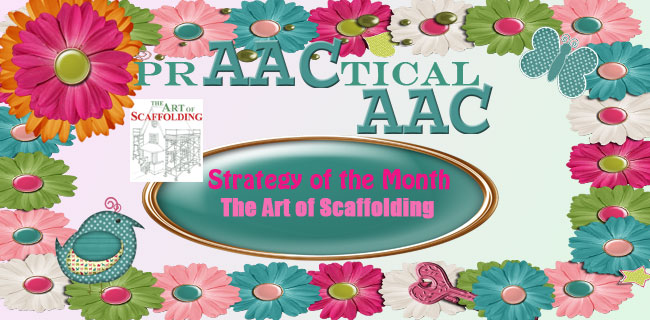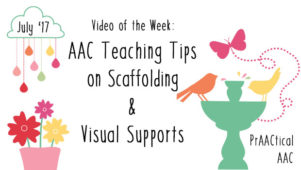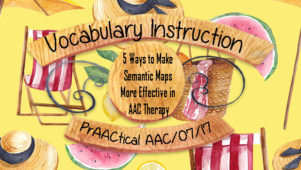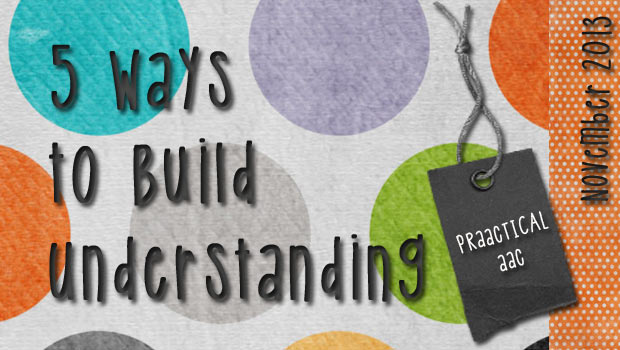The Art of Scaffolding as a Language Facilitation Strategy

“The best thing about being a teacher is it matters. The hardest thing is that it matters every day. All the time.” Todd Whitaker
(Just substitute SLP’s for teachers since SLP’s are teachers of communication and language)
As June ends and we finish up with our Strategy of the Month: Language Facilitation Strategies, we do not want to move on without talking about scaffolding. We often use scaffolding without even knowing we are doing it, but for speech-language pathologists, we need to know the name of each strategy we use because that allows us to make the most of everything we say and do when teaching communication and language. Also, when we know what we are doing, we can teach it to communication partners and thus set the stage for language learning at home, in school, and in the community.
What is it?
Scaffolding is a verbal and visual strategy that has the facilitator build upon prior knowledge of the learner in order for the learner to integrate a new concept or skill. The scaffolding supports information just beyond the level of what the learner can do alone. Scaffolding helps maintain and extend conversations. Scaffolding helps the learner add vocabulary, language concepts, or functional communication to their repertoire. It is similar to scaffolding on a building. It is a temporary support until the job or activity is completed. Scaffolding as a language facilitation strategy for AAC users is a positive and effective tool for language facilitators.
What to do?
- Follow learners communication/language lead or interest
- Use visual and verbal structure to guide the learner to new information
- Use expansions to add to the information the learner already knows and is using
- Use ‘thinking aloud’ types of narration to provide new information
- Simplify tasks to help the learner be successful
- Have patience as the learner integrates the new information
- Use positive feedback and a positive interaction style when adding new information
What to use?
- Use natural visual supports to show the learner the new information (gestures, objects that represent the added knowledge or concept)
- Use prepared visual supports like graphic organizers, cue cards, video clips, or any individualized visual support that adds information for the learner. All of the tools for Making Aided Language Input Easier can also be used to help with scaffolding.
What Not to Do!
- Don’t be surprised by errors
- Don’t give too much information
- Don’t use direct correction
- Don’t get frustrated
Resources for Scaffolding (just a few)
- Autism Teaching Strategies
- InteRact- Aphasia Scaffolding Strategies
- Vocabulary Graphic Organizers for Scaffolding
- Kidspiration- Image Based Scaffolding
- Scaffolding Cue Cards for Reading Comprehension in a Group
- #5 Visual Aids for Scaffolding
We really love comments. How do you use scaffolding in teaching communication and language? Please share any great examples of graphic organizers you have used for scaffolding.
Filed under: Strategy of the Month
Tagged With: Graphic Organizers, language facilitation strategy, Scaffolding
This post was written by Robin Parker




